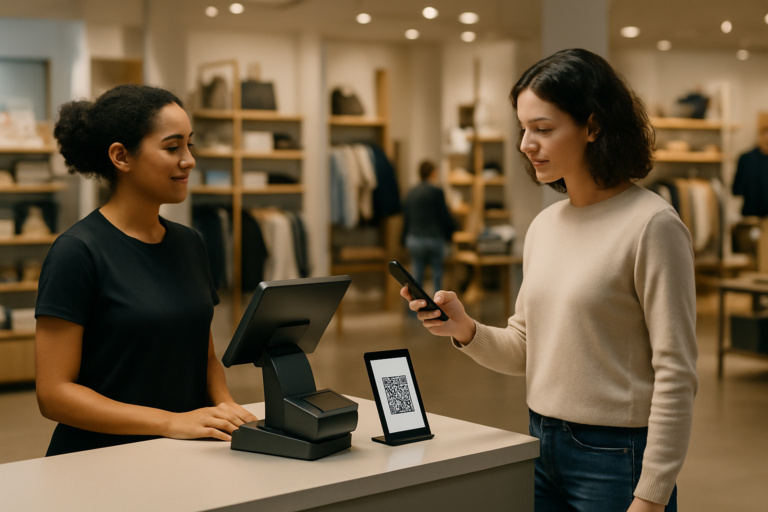The success of online marketing isn’t just measured by the usual digital metrics of impressions, clicks and revenue, but also by real-world actions such as in-store purchases. But connecting these dots in the past has often been a tricky puzzle for retailers and marketers. Is a purchase made in your store based on a customer’s prior knowledge of your brand, or have they been influenced by a sponsored Instagram post or Google remarketing advertisement? Identifying this is tricky, however it makes a huge difference to your retail fortunes, particularly in tracking offline conversions.
Connecting these valuable insights into customer behaviour allows companies to adjust their marketing strategy, not only improving the overall message to their customer base but also maximising the return on investment for marketing and other activities. It prevents money and resources from being allocated to digital advertising channels that simply don’t offer a solid return and instead gives a full overview of all activity, giving a more well-rounded picture of overall customer behaviour.
Unfortunately, effectively linking in-store actions with online marketing isn’t always a straightforward process; there are typically four approaches to getting this information to bridge the data gap. They are: 1) using software such as refive to automatically track offline conversions 2) asking customers directly 3) creating and encouraging customers to use a promo code or 4) collecting customer data and matching it up to ad data.
Whichever way you choose to employ these strategies, you can pull back the curtain and bring additional context and narrative to the customer journey. This insight means being able to craft, implement and execute more effective marketing campaigns.
The Importance of Tracking Offline Conversions
Despite the rise of shopping online, many still prefer in-store purchases, especially for large or special items.
While online shopping is quick and efficient, it lacks the nuanced in-store experience that customers value, despite reduced friction. Customers often like to touch, view and experience a product first-hand, whether it’s trying on a pair of shoes, or testing out different mattresses and beds.

Having the visibility of offline conversions is crucial to truly understanding the impact of online marketing campaigns. Historically, these were treated separately, but considering non-immediate actions can highlight a campaign’s effectiveness. Sometimes the lead times to purchase may be longer (particularly with high ticket items that require some consideration), and sometimes the targeting can take a customer down a different path, but if they purchase it’s still return on investment and is worth being counted. ROI calculations are simply less accurate, and impactful, without that level of data being brought in.
Main Strategies for Tracking Offline Conversions
Automatically
Data can be automatically pulled through using software such as refive. Its core functionality automatically notifies your online ad platform when a conversion occurs in the physical store. The process involves issuing digital receipts to customers, which activate tracking pixels from various online ad platforms when accessed and capture the data. This streamlined approach reduces friction at the point of sale and eliminates the need for customers to provide additional details.
Through API integration, the system links specific purchase details, including items and costs directly to the ad platform. This ensures precise tracking of online-to-offline marketing ROI. The method guarantees accurate reconciliation of purchases with the associated digital accounts, minimising the potential for errors or misinformation.
Directly Asking Customers for Offline Conversion Insights
One of the simplest ways to match up your offline and online customer data is to ask your customers directly. This can be done through feedback forms, surveys, or even at point of checkout. The typical action is to ask customers how they heard of the business, which provides valuable qualitative data.
Asking staff to facilitate data collection is cost-effective but demands more resources, possibly impacting operational efficiency. It can also be hampered by customer reliability and recall, and a customer rushing may give incorrect info. However, despite this, it does remain an option to gain insight and understand the effectiveness of marketing.

Using Special Promo Codes to Track Offline Conversions
Creating unique promotional codes linked to online campaigns can be an extremely effective way to tracking offline conversions. When used in-store, codes connect the online campaign to offline purchase, allowing for an effective way to track campaign effectiveness. It’s simple, and efficient allowing you to directly attribute results to specific marketing actions. It’s also incredibly customisable and can be tailored to different campaigns and strategies. It does however mean offering some sort of discount which can impact the bottom line, also the promotional codes can end up bottlenecking purchases and shifting a customer’s focus away from their actual interests. Equally, promotional codes can be shared and without some sort of gatekeeping it can attribute purchases incorrectly to campaigns.
Collecting Customer Data for Campaign Matching
Finally, there is collecting customer data, either at the point of sale or through a loyalty program. This is similar to automatic, but requires more effort on the part of the customer, causing a barrier to action.
As a retailer, you gather customer information such as email addresses and membership IDs. Linked with online platforms, they help reconcile advertising efforts and understand individual interactions on platforms such as Facebook and Google.
For this to be effective, however, data matching is key. This matching ensures a true understanding of the customer journey, revealing how online engagements translate into offline purchasing decisions. Despite slight friction compared to automatic methods, it enhances ROI accuracy and provides deeper customer behavior insight.
Track, Analyse, Optimise
For accurate marketing ROI assessment and easy data collection, retailers should adopt more advanced automation solutions like refive. This tool bridges the gap between online marketing efforts and offline sales, offering a comprehensive understanding of customer interactions. This doesn’t mean that the other methods should be discounted but should form part of a larger collection initiative. Ultimately, the input and effort put into reconciling the two sales environments can highlight key trends, differences in shopping behaviour, and the overall impact of all marketing initiatives.
If you are interested in finding out more about how you can effectively attribute your customer’s in-store purchases to marketing actions and digital advertising, get in touch today for a free demo.









